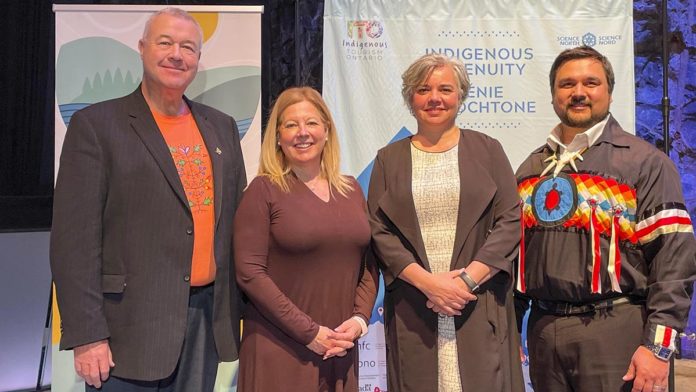LAKE KAGAWONG—A broad scale monitoring (BSM) survey of Lake Kagawong in 2017 demonstrates that the lake will sustain and grow walleye and could have natural reproduction. However, it is impossible at this time to determine the extent of natural reproduction that may or may not be occurring in the lake.
Wayne Selinger, biologist with the Ministry of Northern Development, Mines, Natural Resources and Forestry’s (MNR) Sudbury district office told The Expositor, “the BSM survey was completed on Lake Kagawong between July 5-10, 2017. This work is done provincially and is used to support fisheries management within fisheries management zone (FMZ) 10.
“The survey was completed as part of Ontario’s broad-scale monitoring (BSM) program,” said Mr. Selinger. “BSM surveys are intended to provide information on the status of fish populations in the zone (FMZ 10) and provincial scales. The fish population was surveyed using a combination of large and small mesh nets to provide information on the species present and their characteristics such as growth, age, and abundance.”
Mr. Selinger explained, “the BSM survey consisted of 51 nets set across the lake in various depths. The results showed a diverse fish community of 14 different species. A total of 14 walleye were sampled, representing one percent of the survey catch which was dominated by rock bass, yellow perch and smallmouth bass.”
“The BSM survey confirmed survival and growth of stocked walleye,” continued Mr. Selinger. “The results showed individuals from six different age classes. However, current abundance was relatively low when compared to other walleye fisheries in FMZ 10.”
“Walleye captured at Ontario’s provincial hatcheries are not fin- clipped,” said Mr. Selinger. “Pond fingerling walleye are simply too small to be fin-clipped. As a result, it is impossible at this time to determine the extent of natural reproduction that may or may not be occurring in Lake Kagawong.”
Mr. Selinger explained, “the ministry is prepared to continue stocking Lake Kagawong with walleye, the goal being to provide angling opportunities and establish a naturally-reproducing population. Although we have been stocking the lake for 15 years, given limits on hatchery production, the number of fish we are able to stock annually is quite low considering the size of the lake. As such, we will continue stocking with the objective to continue building walleye biomass and maximize chance of establishment.”
Ian Anderson, a member of the Gore Bay Fish and Game Club (GBFGC) which raises walleye from fingerlings and stocks walleye in Lake Kagawong told The Expositor, “I got a copy of the report and it indicated there are walleye in the lake. The BSM indicated (the ministry) didn’t get huge numbers of walleye. But it confirmed there is survival and growth of walleye in Lake Kagawong.”
“However, what can’t be determined is whether there is natural reproduction because none of the fish had been fin-clipped. There is no way the netting will confirm natural reproduction unless the fish have been fin clipped. We (GBFGC) were planting advanced fingerlings with no fin-clipping. What is important at this time is that the walleye are doing well in the lake in terms of growth and survival.”




